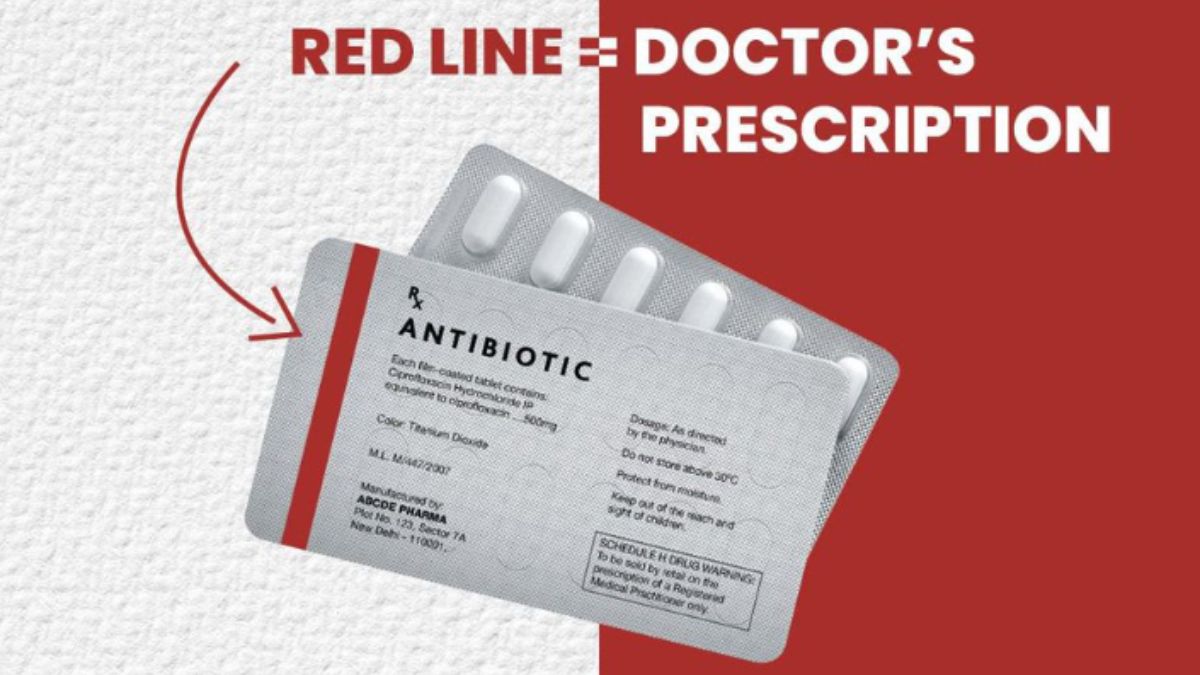In our fast-paced lives, popping a pill for quick relief has become second nature—whether it’s for a headache, fever, or infection. But did you know that some medicines come with a red line or red box on their packaging? This isn’t just a design choice—it’s a critical warning from health authorities.
The Ministry of Health and Family Welfare recently took to X (formerly Twitter) to remind the public about the dangers of self-medicating with such medicines. Their message was clear: “A RED LINE on the strip of medicines implies that the medicine should not be consumed without a doctor’s prescription.” Ignoring this warning can lead to antibiotic resistance, a growing global health crisis where bacteria become immune to treatment, making infections harder to cure.
What Do the Marks on Medicine Packaging Mean?
1. Red Line or Red Box – A Strict Warning
Medicines marked with a red line or box (commonly antibiotics) should never be taken without a doctor’s prescription. Even if you’ve taken them before, self-medicating can lead to resistance. The ministry also advises completing the full prescribed course to ensure the infection is fully treated.
2. Dosage – Check Before You Consume
Every medicine strip or bottle clearly states the recommended dosage for adults and children. Skipping this step can lead to overdosing or underdosing, both of which can have serious consequences.
3. Allergy Warnings – Don’t Ignore Them
Some medicines contain ingredients that can trigger allergic reactions. Always check for warning labels and inform your doctor if you have known allergies. This is especially crucial for patients with existing conditions, pregnant women, or the elderly.
4. Storage Conditions – More Important Than You Think
Storing medicines in humid, hot, or bright conditions can make them less effective or even harmful. Always follow the recommended storage instructions (e.g., “Store in a cool, dry place”) to maintain their potency.
5. Expiry Date – Never Use Expired Medicines
An expired medicine may not work as intended and could even cause harm. Always check the expiry date and batch number before purchasing or consuming any medication.
6. The Leaflet – Read It, Don’t Toss It!
That folded paper inside the medicine box? It’s the Patient Information Leaflet (PIL), containing vital details like side effects, drug interactions, and proper usage. Skipping this could mean missing crucial safety information.
Medicines with a red line should NEVER be consumed without medical advice. Misuse of antibiotics can lead to antibiotic resistance.#ReadTheRead#HealthForAll pic.twitter.com/75rzMm3ChF
— Ministry of Health (@MoHFW_INDIA) July 10, 2025
Why This Matters
Misusing antibiotics and other prescription drugs doesn’t just harm you—it contributes to a larger public health threat. By following these guidelines, we can prevent antibiotic resistance, avoid adverse reactions, and ensure effective treatment.
Next time you reach for a medicine, look beyond the name—check the red lines, dosage, and warnings. Your health depends on it!




